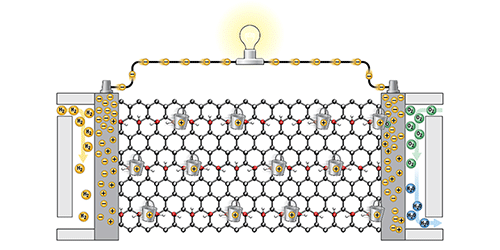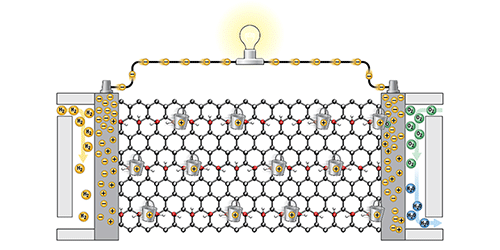Protons in the Fast Lane
Membranes that conduct protons form the basis of fuel cells in hydrogen-powered cars and buses. But they only conduct well in the presence of water and at temperatures below about —hotter than that, and they become dehydrated. Operating such membrane-based fuel cells at higher temperatures would come with several perks, including decreased carbon monoxide poisoning of the cells’ anodes. Karl Johnson from the University of Pittsburgh and colleagues now predict that if you add hydroxyl (OH) groups to a variant of graphene known as graphane, you’ll end up with a material that conducts protons fast, even in the absence of water and at increased temperatures.
Graphane (with two a’s) is graphene with a layer of hydrogen atoms bonded to each side of it. Using density-functional-theory calculations and molecular-dynamics simulations, Johnson and co-workers found that OH groups covalently attached to graphane can form a continuous hydrogen-bonded network. This network works like a bucket brigade, allowing protons to be handed over from one OH group to another, very fast and at a wide range of temperatures. This fast motion is in contrast with that of other materials that have been shown to conduct protons in the absence of water but lack an unbroken transport pathway, such as polymers with OH groups tacked on and ionic crystals. The researchers reckon that hydroxylated graphane could be produced with electron-beam-generated plasmas, which have been used to attach fluorine, hydrogen, and oxygen atoms to graphene.
This research is published in Physical Review Letters.
–Ana Lopes
Ana Lopes is a Senior Editor of Physics.





